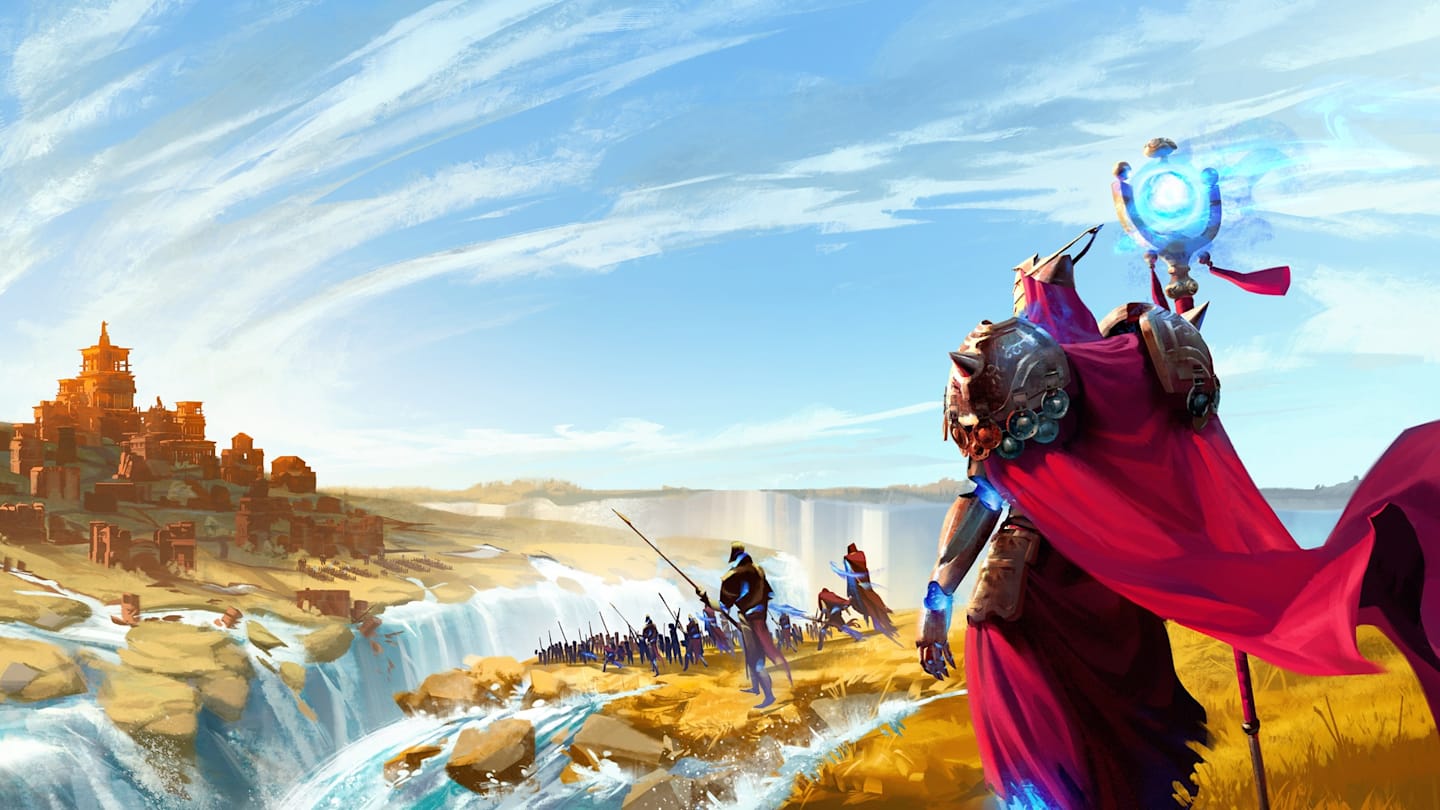
Saiadha’s intense monsoon season isn’t all bad – the increased chance of rare creatures appearing and better rewards after battles actually make it profitable. However, the rain also brings some serious problems. Suddenly, glowing, radioactive canyons have opened up across my lands, and they’re spawning dangerous enemies called Doomwraiths that poison the surrounding territory. These Doomwraiths are really tough; I barely managed to defeat one in my first attempt, and it cost me dearly. Luckily, I was able to defend my territory, but it was a close call. The good news is that the Doomwraith’s remains became a permanent structure on the map, providing a valuable source of resources.
With *Endless Legend 2*, Amplitude Studios returns to the turn-based 4X strategy genre – after becoming independent again – and focuses heavily on creating a rich and immersive world, impacting both the story and how the game is played.
Saiadha begins as a world with limited landmasses, mostly surrounded by ocean. You can immediately start exploring with your initial units to find the best location for your main city. Like other Amplitude games, the world is split into regions. Claiming a region with a town or outpost gives you control of the whole area, though you’ll still need to build districts expanding from your city center, except when harvesting strategic resources. Players who have played Amplitude’s games before will quickly recognize the familiar resources: Food, Industry, Dust, Science, and Influence – often referred to as FIDSI.
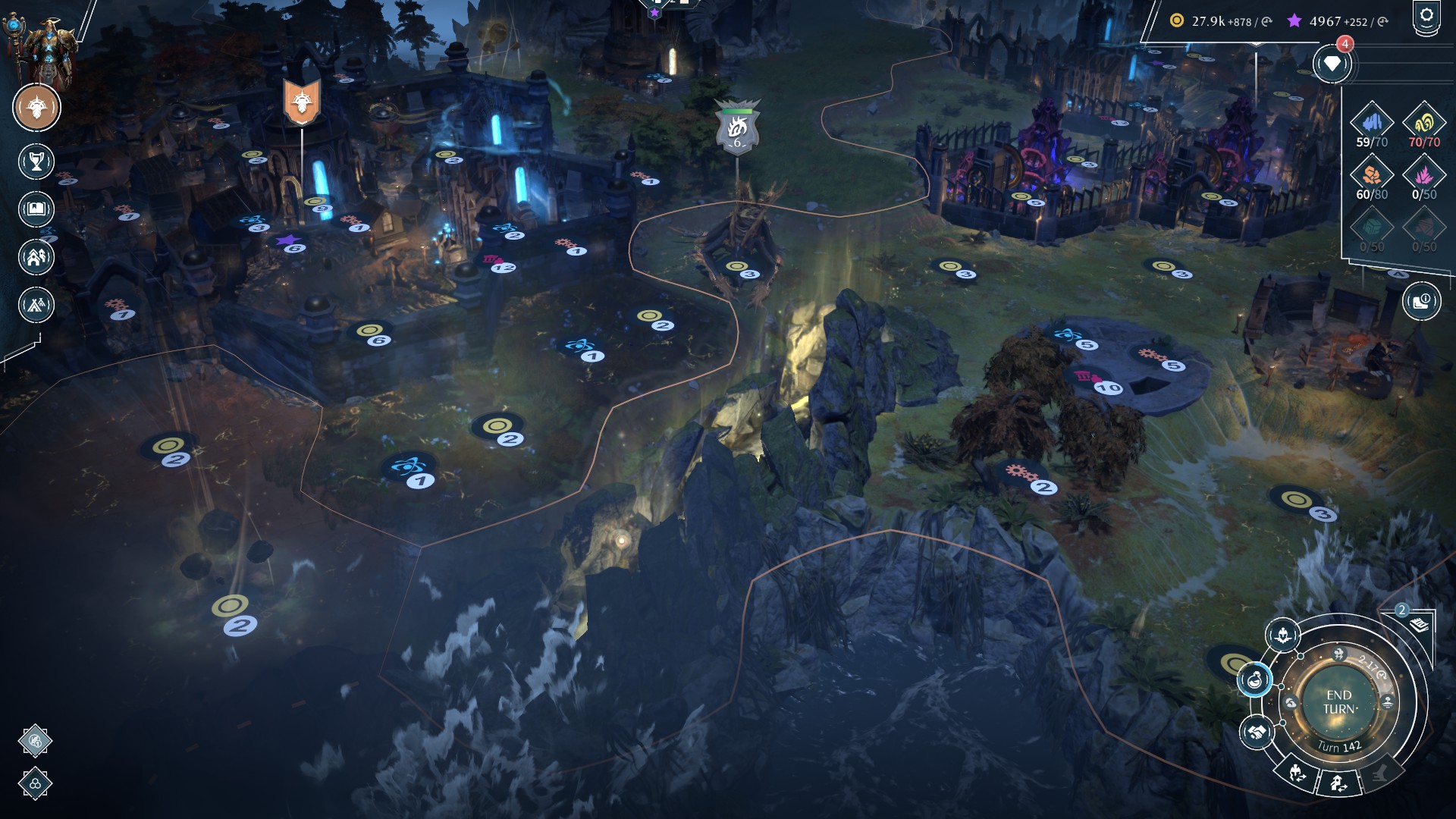
I’ve been playing these games for years, and they always use this same core system. Honestly, I’ve had problems with it before – in *Humankind*, some cultures that focused on industry were just way too powerful and made everything else feel useless for a long time. But with *Endless Legend 2* – at least from what I’ve played so far – it feels different. The way each faction is unique seems to be keeping things balanced, which is great. I’ll explain more about that later, though.
Exploring Saiadha will reveal many things: hidden anomalies, small settlements, dungeons, valuable resources, and landmarks that start side quests – essentially, there’s a lot to discover. What makes Endless Legend 2 different is that exploration doesn’t stop after the initial stages of the game. The monsoons we talked about earlier cause the ocean to recede in something called a Tidefall, revealing new land to explore. This keeps the exploration phase fresh throughout the game, and maintains that exciting feeling of competing to claim the best territory.
When you combine these game mechanics with elements like Doomwraiths creating new resources when they’re defeated, or important locations appearing on the map, the world feels truly alive and significant – it’s more than just a place to play the game. This also keeps gameplay exciting and encourages strategic thinking. For instance, you might intentionally lure a Doomwraith into your territory, accepting some corruption in exchange for a potential future benefit from the new resources it creates.
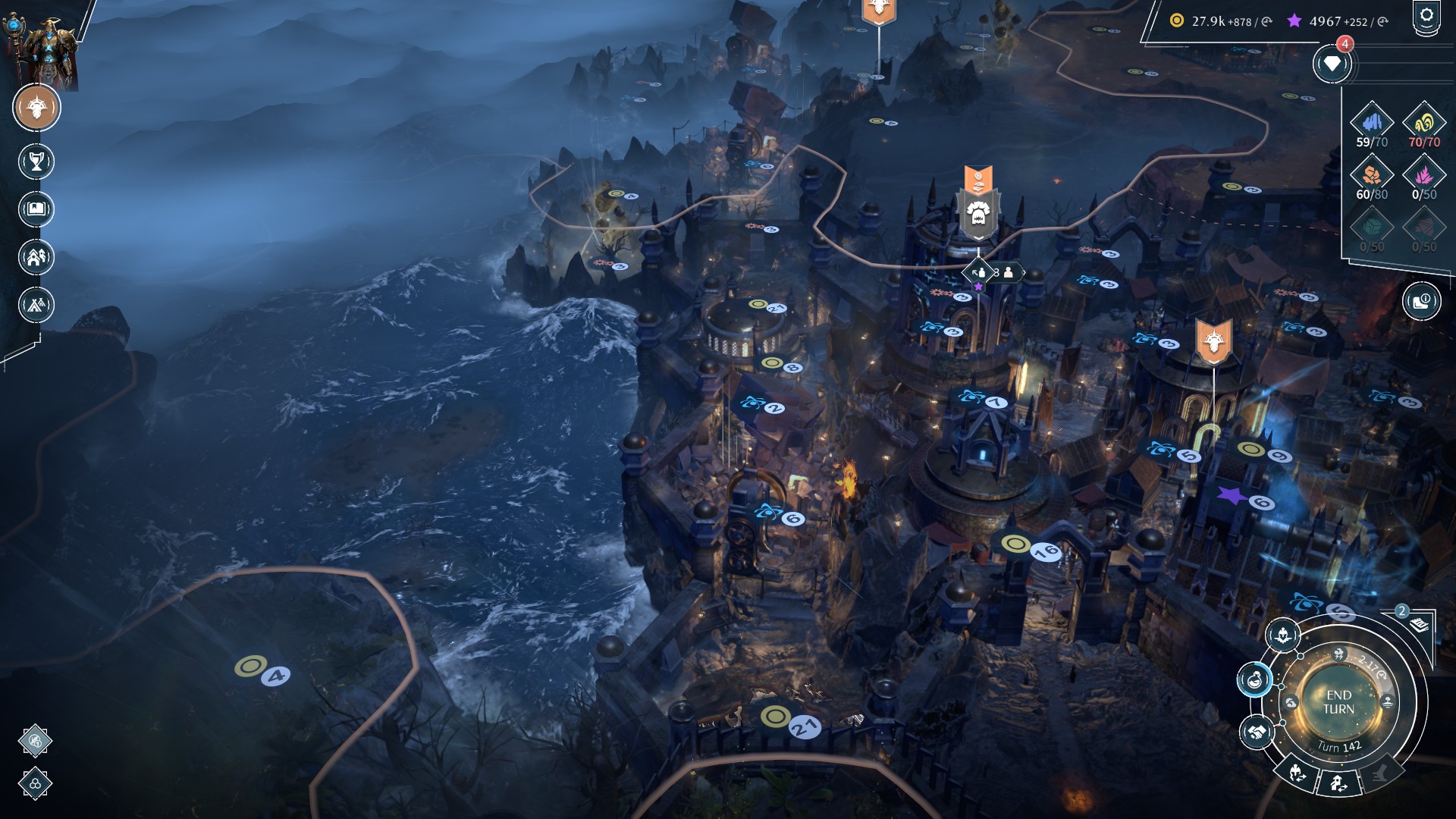
Age of Wonders 4 recently succeeded in making its game world feel vibrant and meaningful, and the upcoming Endless Legend 2 is building on that success by making it a central part of the game. This is a promising sign, and I hope the developers continue to refine and improve this aspect during the Early Access period.
Saiadha adds a lot to the game’s story, both in the main quests for each faction and in optional side missions – though I won’t reveal any details! It’s unusual to focus on story in a strategy game review, but there’s a wealth of opportunity for players to create their own unique experiences. You can develop relationships between your heroes, establish bases, and even create enemies. For example, avenging a wounded friend by destroying an enemy’s base can become a satisfying goal, and that’s fantastic.
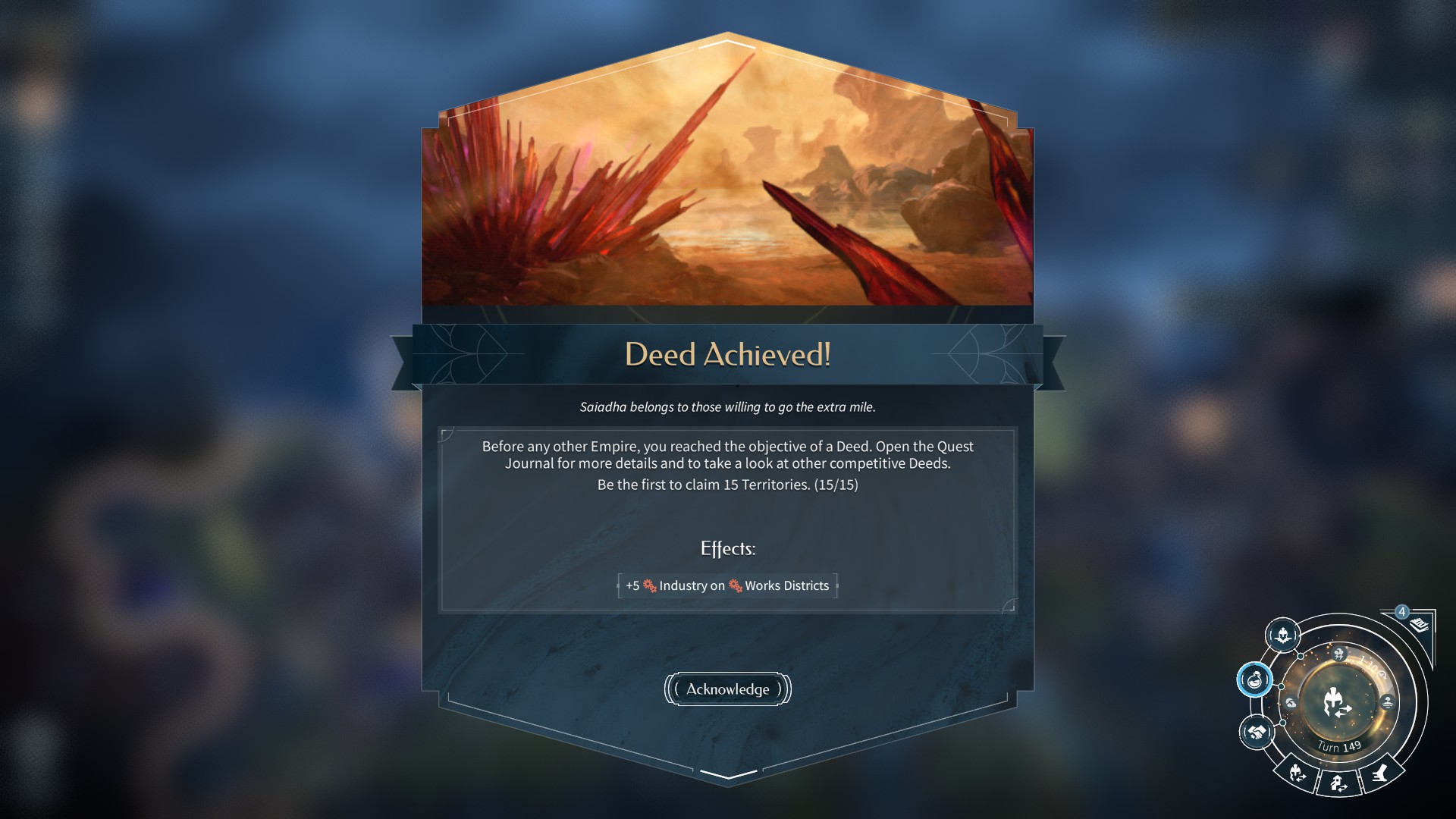
The story isn’t just background detail; your choices actually matter. There are multiple endings possible, and even seemingly small conversations – you’ll typically have two or three options – can have significant and lasting effects.
Endless Legend 2 features a user interface that is both easy to use and looks good. It effectively uses helpful pop-up tips to explain things, and clearly shows players what will happen when they make choices. For example, when you plan to build something, the game breaks down exactly how it will produce resources, giving you a clear picture of what to expect.
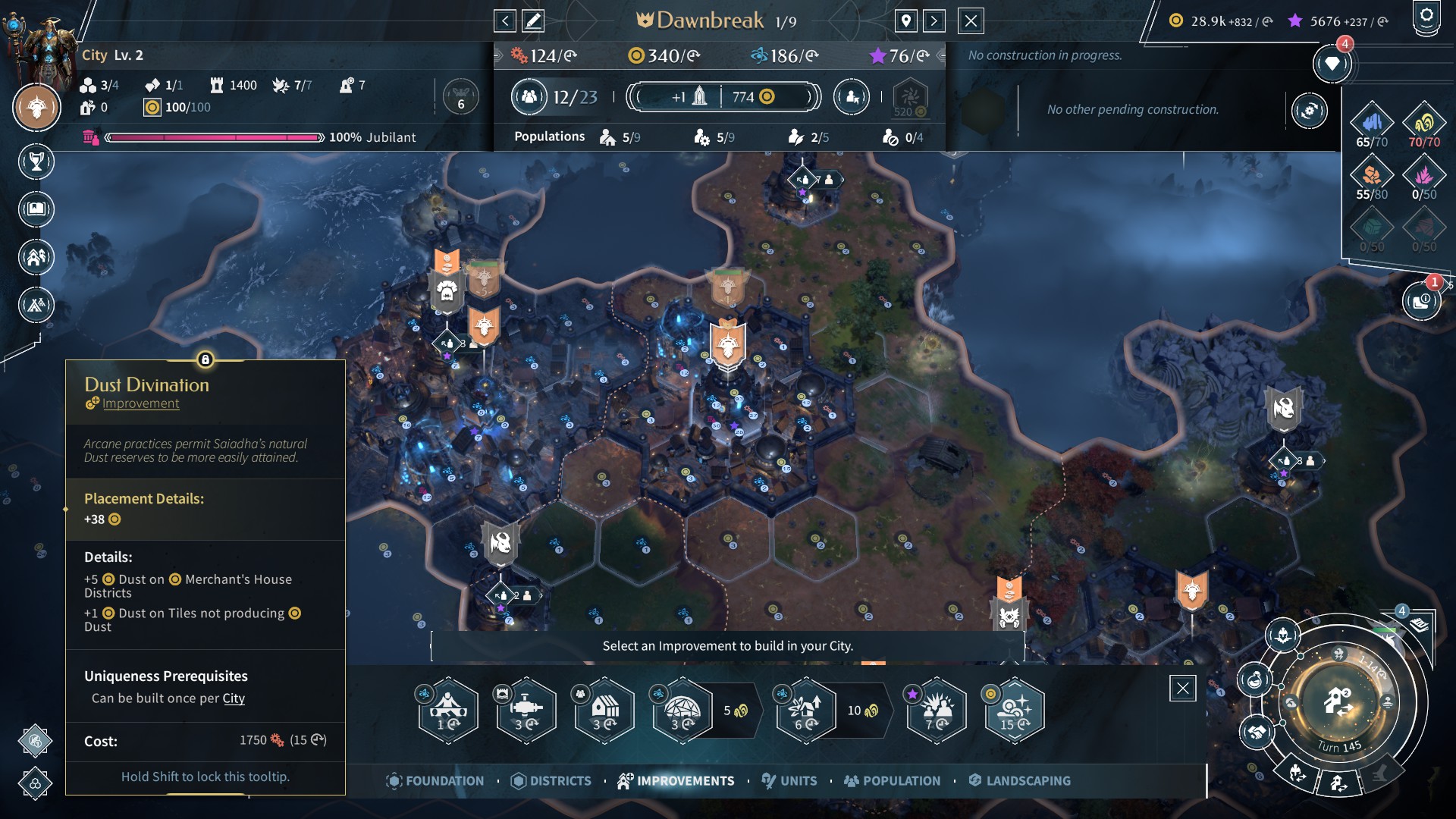
Careful planning is still important, and combining different buildings and tiles can be really satisfying. However, the game provides enough information that even new players can easily make smart choices and have fun, making it easier to pick up and play.
The game also lacks a helpful in-game encyclopedia. Instead of quickly searching for information, you have to dig through many menus to find even simple explanations. Some important details aren’t displayed at all. For example, a key feature lets you sacrifice conquered populations to create more of your own, but the game doesn’t tell you *how many* conquered people you actually have. Considering this is an early version of the game, I’m willing to overlook this, as it should be a fairly simple addition.
Endless Legend 2 suffers from too much information appearing on screen at once. Even during conversations, you’re constantly interrupted by notifications about things like completed research, diplomatic offers, and approaching victories. While all this information is useful, it’s overwhelming. It would be better to let players manage the game’s flow without constant interruptions or having important choices hidden behind more pop-ups. Fortunately, this seems like a relatively simple issue to address.
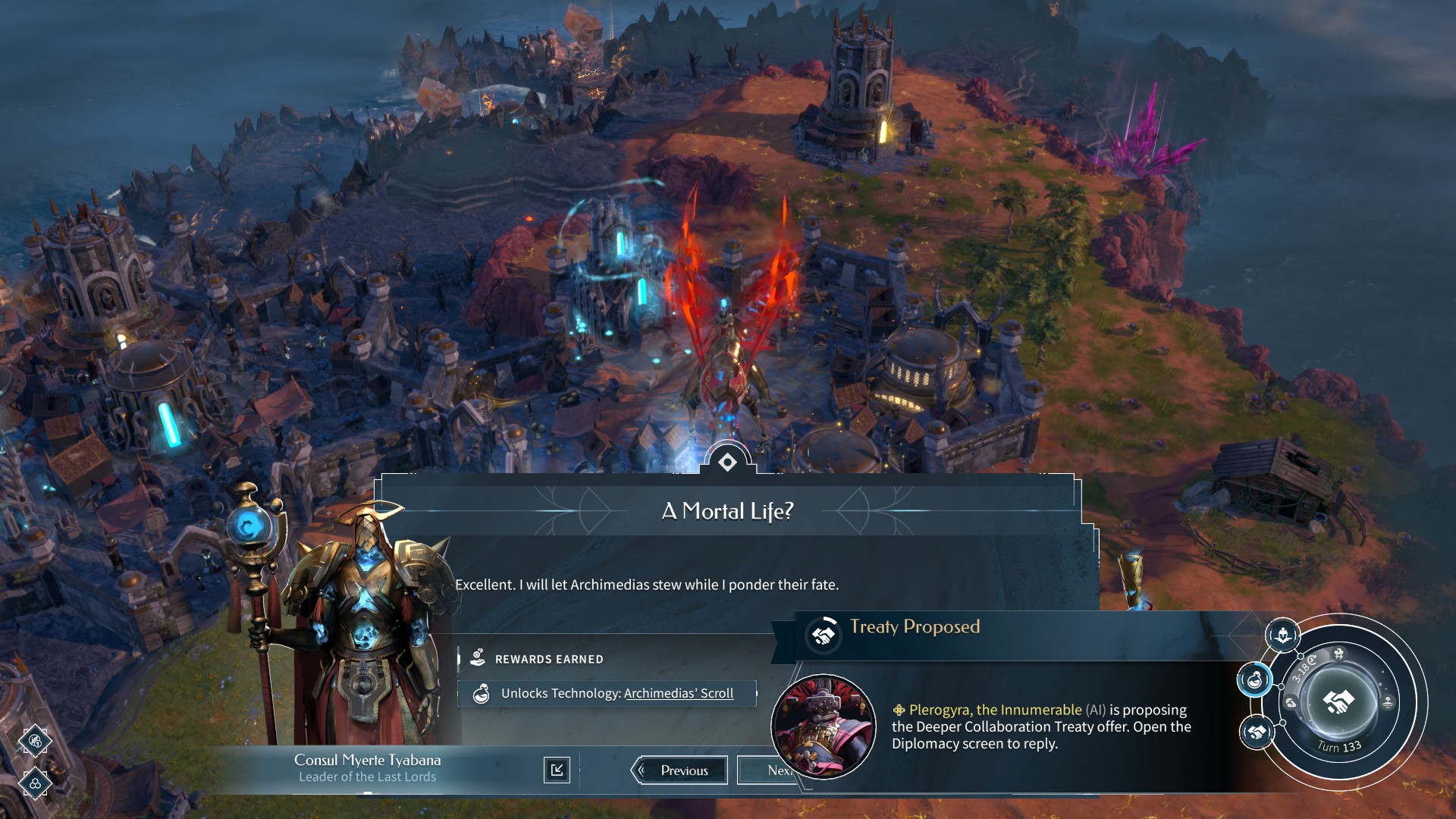
I wasn’t as impressed with the combat system. It feels quite basic, and while that was an intentional choice, the limitations – like heroes only having one ability per battle and often unfair or cramped battle maps – made me quickly prefer letting the game automatically resolve fights. I did appreciate the variety of units and how clearly combat information is presented. On a positive note, the game’s upgrade system ensures that all units remain useful throughout the game, so you won’t end up with outdated armies.
Honestly, when this game *clicks*, it’s awesome. Like, getting a really well-timed kill with one of my Last Lords units to heal the others, or pulling off a powerful hero move? Super satisfying. I definitely have to think about where I’m putting my units – high ground and forests actually make a difference. But after a while, even those good moments start to feel… repetitive. It just doesn’t stay fresh for very long.
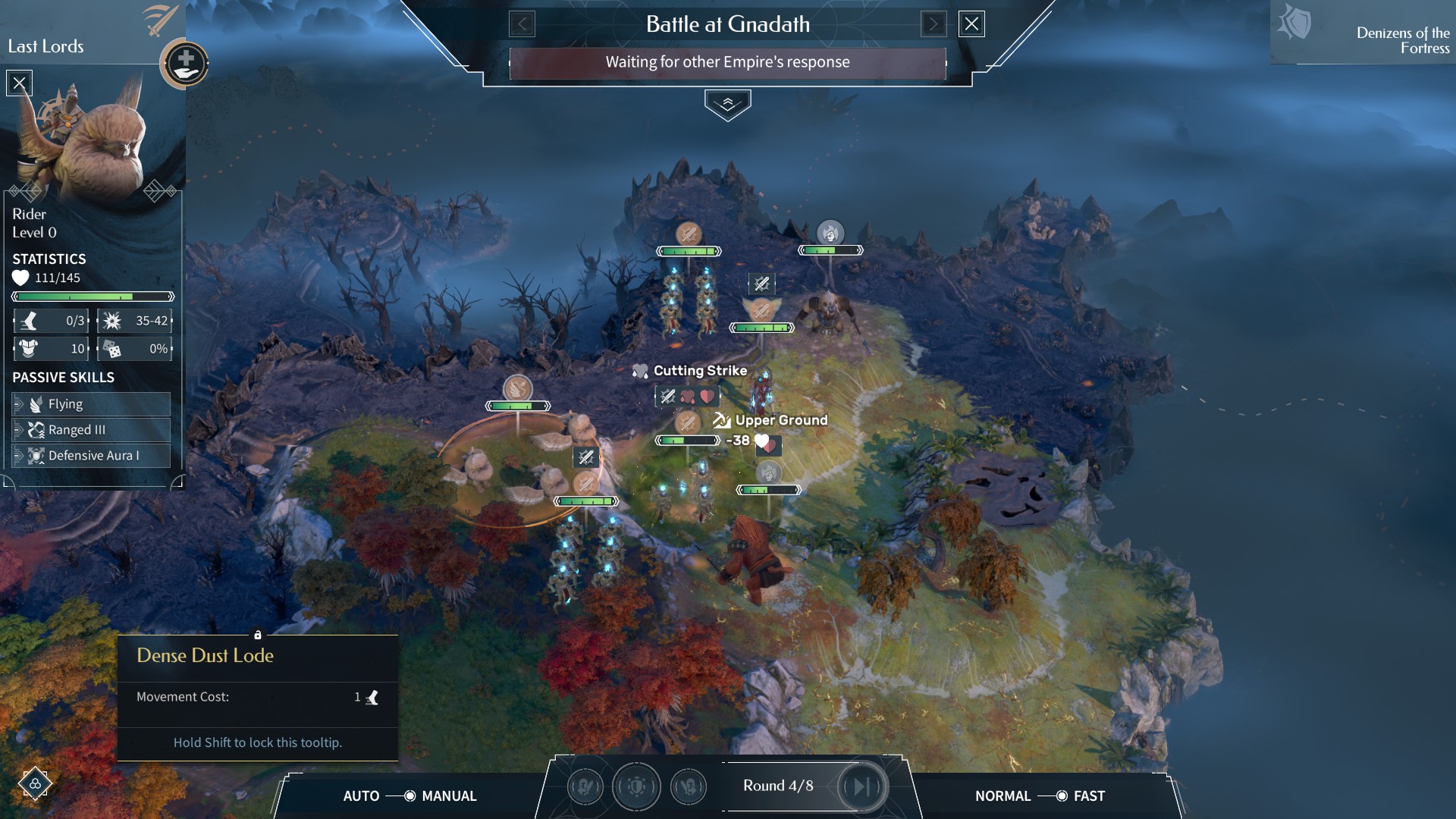
Fortunately, each playthrough feels fresh because of the game’s diverse factions. Playing as the peaceful Aspects is a vastly different experience than controlling the relentless Necrophage swarm or the enduring, resource-driven Last Lords. These differences go beyond just unique units and abilities – the factions actually play in fundamentally different ways.
The Last Lords don’t require food to survive – they live on Dust instead. Their armies also don’t heal on their own, relying entirely on Dust for immediate recovery. This dependency drastically alters your strategy, influencing which territories you prioritize and how you approach warfare. Unlike the Necropages, who need meat to grow their population, the Last Lords’ need for Dust shapes their diplomatic relationships in a unique way.
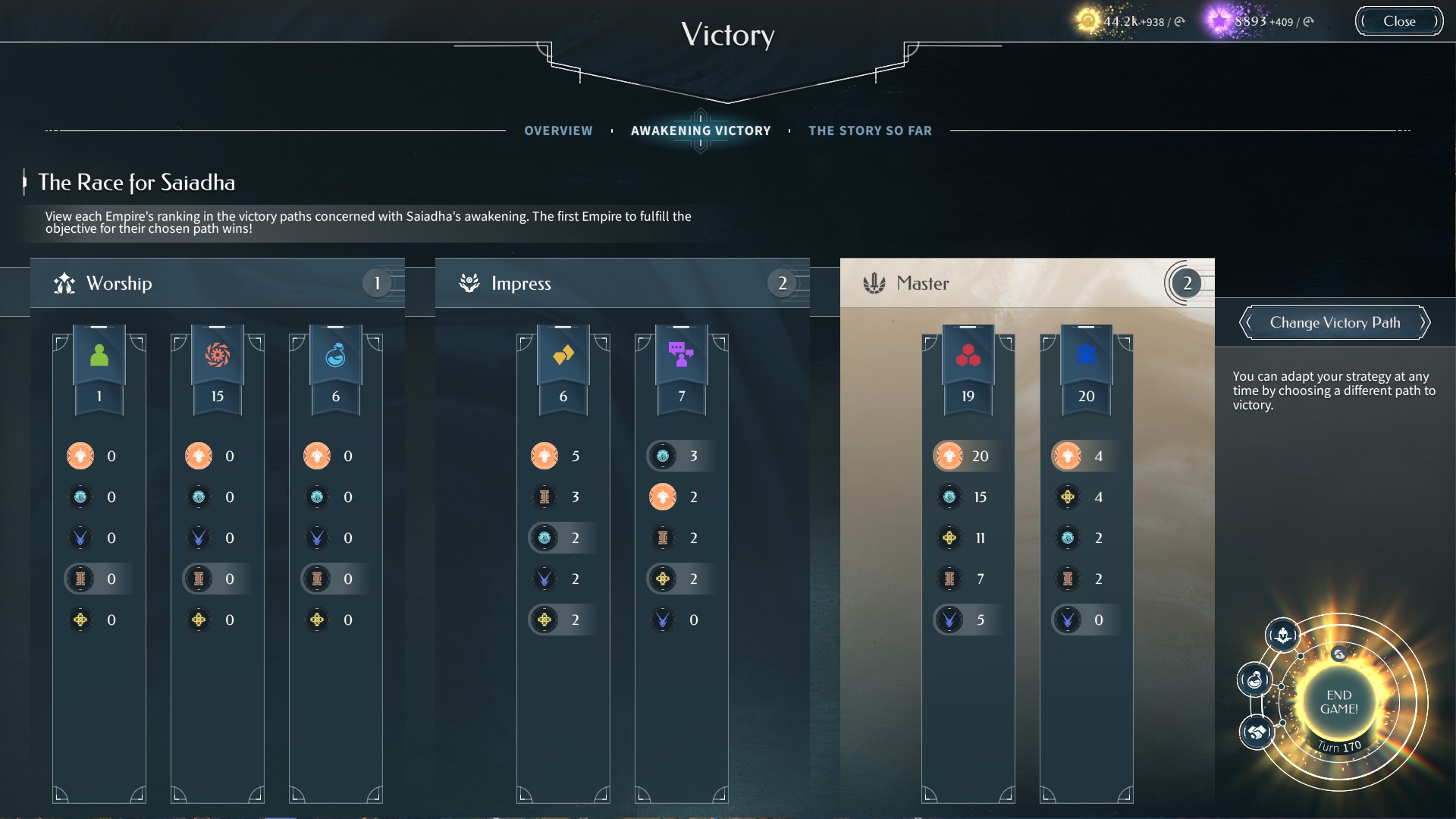
Even though each side plays differently, every faction has a good chance of winning. The game offers multiple paths to victory – you can control a large area, become allies with everyone, or gather plenty of resources. Completing a set number of dungeons is also a win condition, but I think it requires a bit too much effort. Some balancing adjustments would definitely improve the game.
Overall, this early version of Endless Legend 2 is looking really good. The developers have a clear idea of where they’re going with the game, and they’ve prioritized showing off that vision. They’ve built a solid base to work from and are open to feedback from players.
Read More
- Silver Rate Forecast
- Красный Октябрь акции прогноз. Цена KROT
- Gold Rate Forecast
- Dogecoin’s Big Yawn: Musk’s X Money Launch Leaves Market Unimpressed 🐕💸
- Bitcoin’s Ballet: Will the Bull Pirouette or Stumble? 💃🐂
- Navitas: A Director’s Exit and the Market’s Musing
- LINK’s Tumble: A Tale of Woe, Wraiths, and Wrapped Assets 🌉💸
- Nvidia vs AMD: The AI Dividend Duel of 2026
- Can the Stock Market Defy Logic and Achieve a Third Consecutive 20% Gain?
- Solana Spot Trading Unleashed: dYdX’s Wild Ride in the US!
2025-09-18 17:18